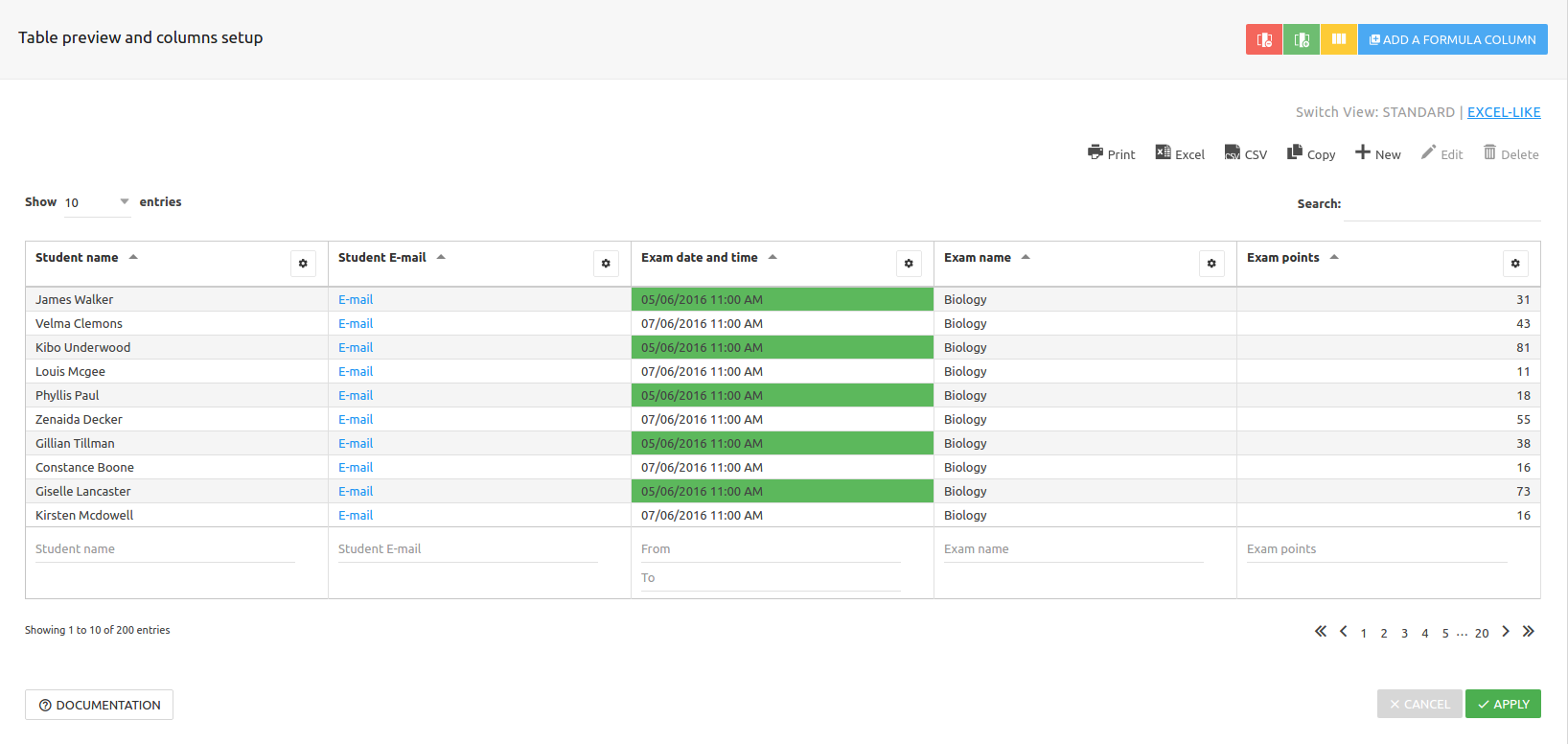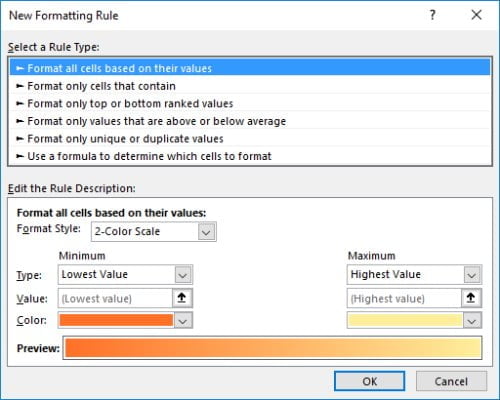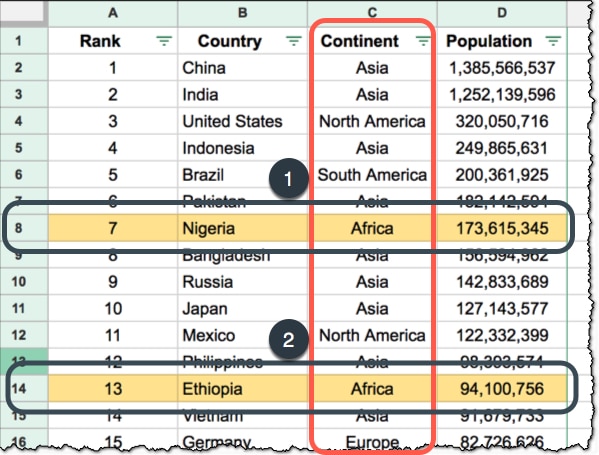- Conditional Formatting In Word Drop Down List
- Conditional Formatting In Word 2016
- Conditional Formatting In Word
- Conditional Formatting In Word 2016
- Conditional Formatting In Word Mail Merge
- 'Conditional formatting' is a feature of Excel, doesn't exist in Word. So if you have to use the feature of Excel in Word, then you can try embedding (copy the table in excel now open the Word doc and try Paste Paste Special select Microsoft Excel Worksheet Object ok).
- IF statements allow you to compare two values and display document content based on the result of the comparison. When used in a Word template, IF fields are.
Conditional Formatting In Word Drop Down List
I'm trying to make an efficient conditional formatting work in Microsoft Word with an VBA, that will be very similar to the formatting known from Excel. My current solution I have a 4th column with an IF statement in a field that checks if the value in Column 2 is less equal or higher than in Column 3, combined with this VBA for conditional.
Word templates introduced in CRM Online and CRM 2016 are not the easiest contraptions to edit. One of the questions that popped up in a recent conversation was how to use conditional IF in the document generation.
tl;dr
To refer to the control values after the document has been generated, wrap content controls using bookmarks defined at the control container level.

Longer
CRM fields are defined as Content Controls and in theory we could have written some simple VBA using ContentControl object. Except that CRM does not play nice when generating the document and simply replaces all content controls with the record values.
The solution is to wrap the content controls using the bookmarks defined at the container level, i.e. cell, row, paragraph, etc. Then this bookmark can be used as a reference in a conditional expression of the IF field.
For example, to insert conditional text depending on the total invoice value:
- Extract the Invoice template that comes with the sample data and save it under a different name.
- Open the template, find total amount, select the entire table cell and click Insert > Bookmark.
- Type totalbookmark as a bookmark name, click Add.
- Delete the words “Thank you for your business” and click Insert > Quick Part > Field.
- Select IF field and type the following field code:
IF totalbookmark > 100 “Thank you for you business!” “Thanks for nothing!” - Click OK. Hint: to see and edit field codes in the document, press Alt-F9.
- Save the file and upload to CRM as a new template.
- Create an invoice and generate the invoice document.
- Enable document for editing, press Ctrl-A to select the entire content and press F9 to refresh the field content
- Depending on the total value of the invoice, the document will say “Thank you for your business!” or “Thanks for nothing!”
Conditional Formatting In Word 2016
It’s not a full automation that potentially could be improved with some VBA (I’m not 100% sure if it will work) but it’s a step in the right direction and a cheap way to add some pizazz to your documents.
Where is Conditional Formatting in Microsoft Excel 2007, 2010, 2013, 2016, 2019 and 365
How to Bring Back Classic Menus and Toolbars to Office 2007, 2010, 2013, 2016, 2019 and 365? |
Used way to get Conditional Formatting if you are using Classic Menu for Office

Classic Menu for Office will bring you back to the familiar interface of Microsoft Excel 2003/XP(2002)/2000. Just click the “Format” item on the mail menu, you will find the “Conditional Formatting” item staying in the list.
Conditional Formatting in Microsoft Excel 2007/2010/2013/2016/2019 Ribbon


If you do not have Classic Menu for Office, and have never used Microsoft Excel 2007/2010/2013/2016/2019 Ribbon before, it may be a little difficult to find out the “Conditional Formatting” button quickly in the completely new Ribbon at the beginning.

Conditional Formatting In Word
However, it is also very convenient to get this button after you are used to Microsoft Excel 2007/2010/2013/2016/2019 Ribbon. Launch Microsoft Exce, click the “Home” tab, and go to the “Styles” group, then you will see the “Conditional Formatting” button there:
It seems somewhat hard to get used to the new ribbon in a short time. Please do not worry about it! Classic Menu for Office brings back used classic styles interface of Microsoft Office 2003 with all new feature of Microsoft Office 2007, 2010, 2013, 2016, 2019 and 365. Classic Menu for Office is an excellent helper to easy your learning curve.
More Related Articles...
Classic Menu for Office
Brings the familiar classic menus and toolbars back to Microsoft Office 2007, 2010, 2013, 2016, 2019 and 365. You can use Office 2007/2010/2013/2016 immediately without any training. Supports all languages, and all new commands of 2007, 2010, 2013, 2016, 2019 and 365 have been added into the classic interface.
Conditional Formatting In Word 2016
Classic Menu for OfficeIt includes Classic Menu for Word, Excel, PowerPoint, OneNote, Outlook, Publisher, Access, InfoPath, Visio and Project 2010, 2013, 2016, 2019 and 365. |
Classic Menu for Office 2007It includes Classic Menu for Word, Excel, PowerPoint, Access and Outlook 2007. |